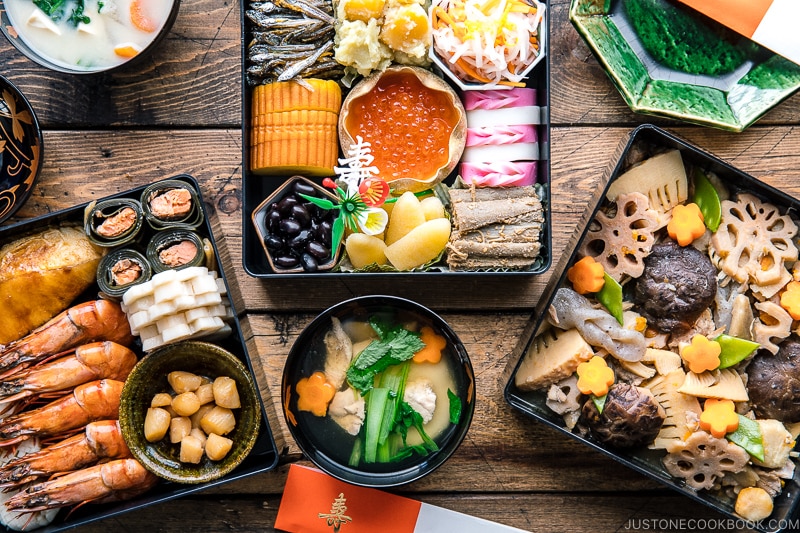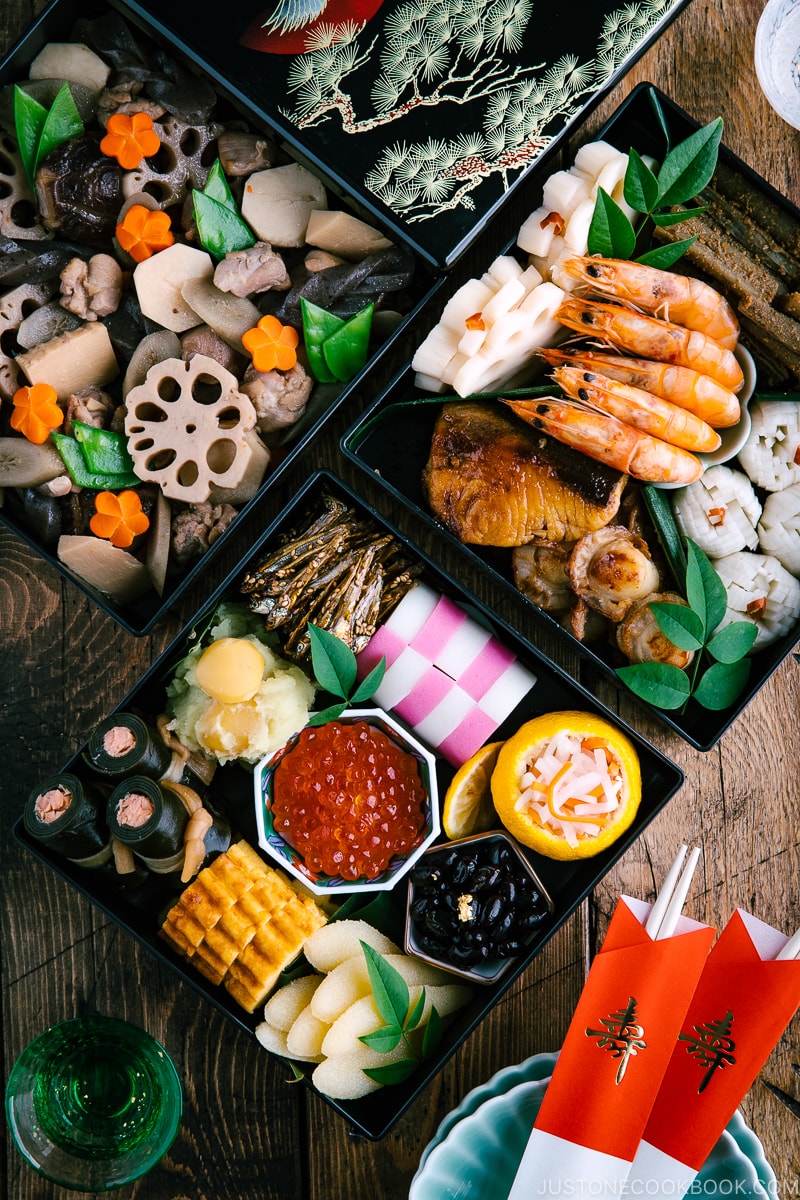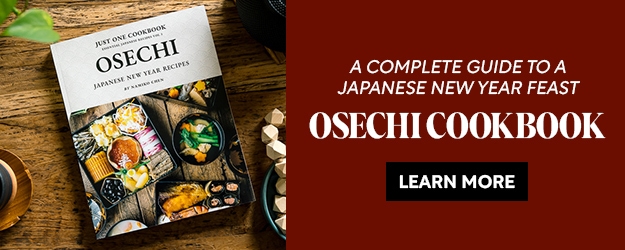Osechi Ryori is the traditional food enjoyed on New Year’s Day in Japan. The assortment of colorful dishes are packed and displayed in special stacking boxes called jubako. Every Osechi dish has a special meaning in welcoming the New Year.
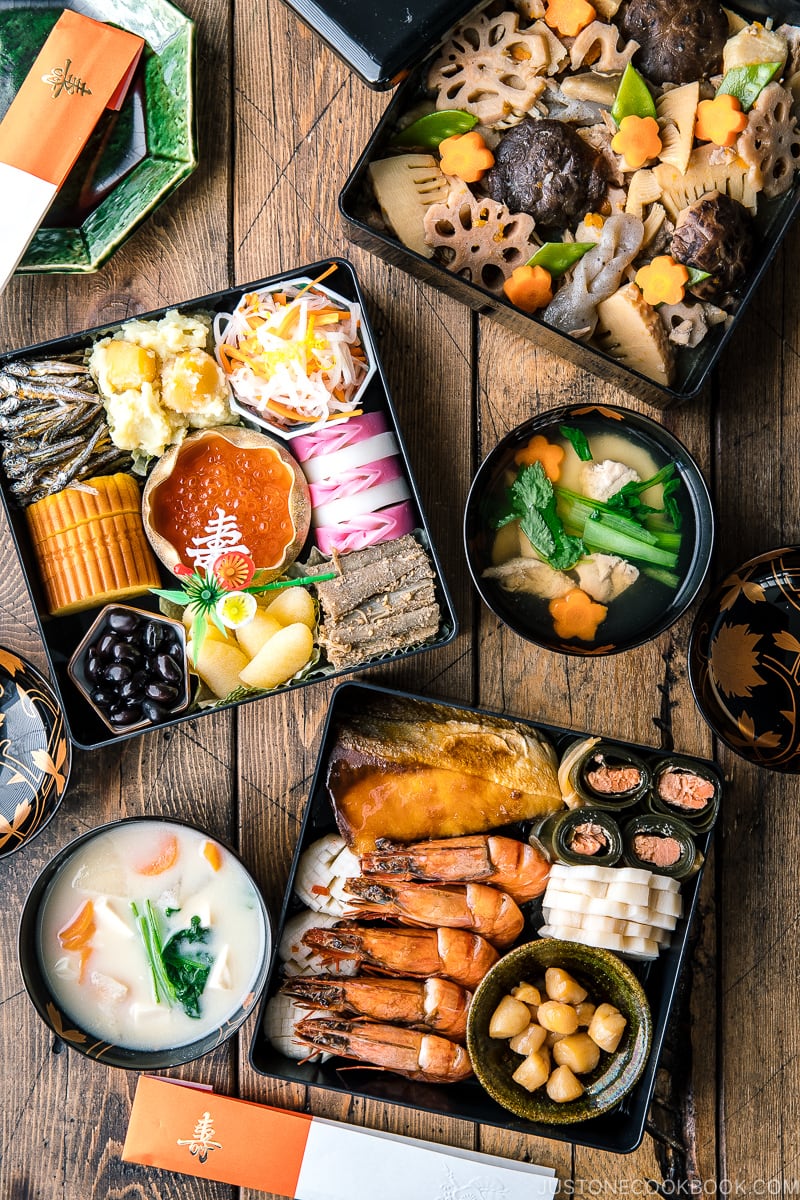
The Japanese celebrate the New Year Day with traditional New Year foods called Osechi Ryori (Osechi cuisine). It is considered the most important meal of the year as each dish serves as well-wishes for the coming year.
What is Osechi Ryori?
Similar to bento boxes, Osechi Ryori is usually packed in 2-3 layers of lacquer boxes (ojubako) and there are many dishes in each layer. The entire family would share one ojubako to enjoy on new year’s day. The multi-tiered boxes symbolize the hope that happiness & wealth come continuously, like the layers of lacquerware.
To welcome the New Year with you, I’ve included a selection of popular Osechi Ryori dishes below. Each recipe also comes with a video that guides you through the cooking process. I hope you enjoy the spread!
And don’t miss our popular side dishes & desserts to serve with Osechi.
22 Popular Osechi Ryori Dishes
- Sweet Rolled Omelette (Datemaki) Datemaki
- Candied Chestnut and Sweet Potatoes (Kuri Kinton)
- Candied Anchovies (Tazukuri) Tazukuri
- Sweet Black Soybeans (Kuromame) Black beans and Instant Pot Kuromame
- Herring Roe (Kazunoko) Kazunoko
- Daikon & Carrot Salad (Namasu) Kohaku Namasu
- Pickled Chrysanthemum Turnip (Kikka Kabu) Kikka Kabu
- Pickled Lotus Root (Su Renkon) Vinegar lotus root
- Pounded Burdock Root with Sesame Sauce (Tataki Gobo)
- Simmered Chicken and Vegetables (Chikuzenni) Chikuzenni
- Instant Pot Nishime boiled
- Simmered Shrimp (Ebi no Umani) Boiled shrimp
- Salmon Kombu Roll (Kobumaki) Salmon wrapped in kelp
- Yellowtail Teriyaki (Buri no Teriyaki) Yellowtail Teriyaki
- Butter Soy Sauce Scallops Grilled scallops with butter and soy sauce
- Decorative Fish Cakes (Kamaboko) Kamaboko decorative cut
- Kamaboko Fish Cake with Salmon Roe Kamaboko salmon roe
- Kanto-style Ozoni (New Year’s Soup) Kanto style zoni
- Kansai-style Ozoni (New Year’s Soup) Kansai style zoni
- Fresh Homemade Mochi How to make rice cake
- How to Eat Mochi (Japanese Rice Cakes) Various rice cakes
- Sweet Red Bean Paste (Anko) Anko
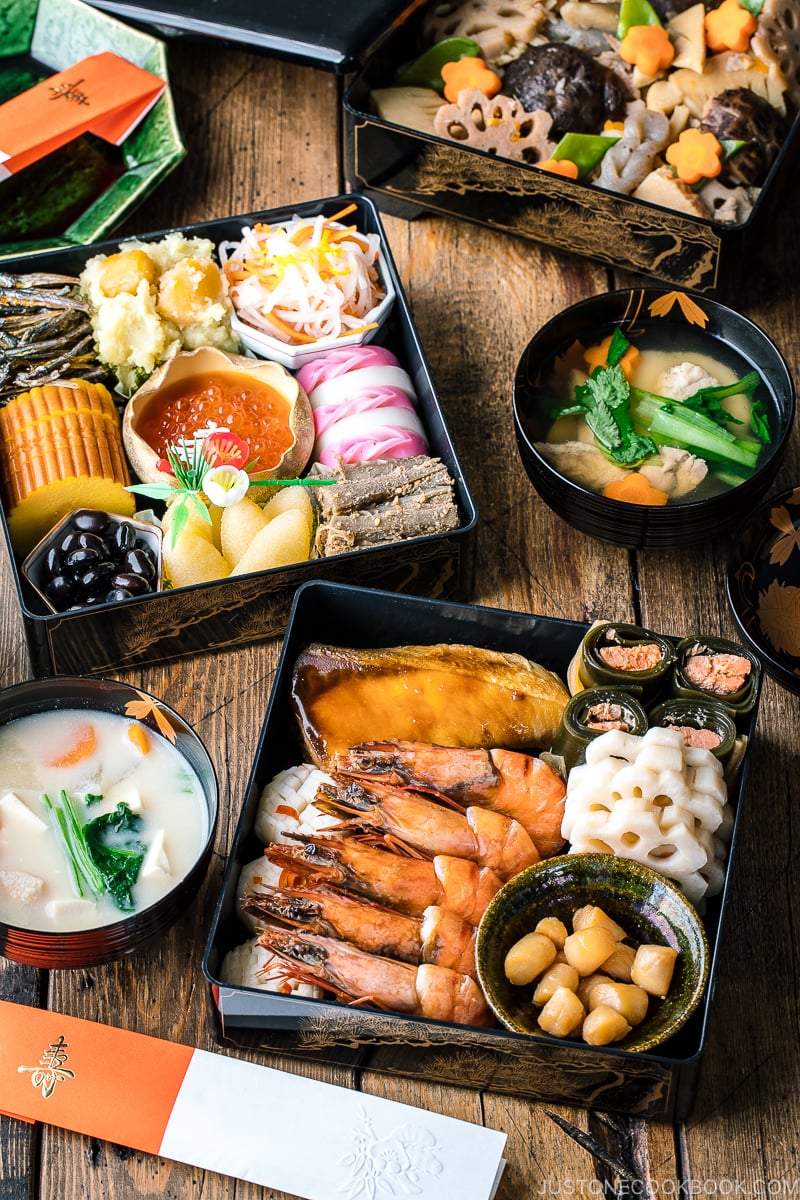
1. Datemaki (Sweet Rolled Omelette) rolled omelet
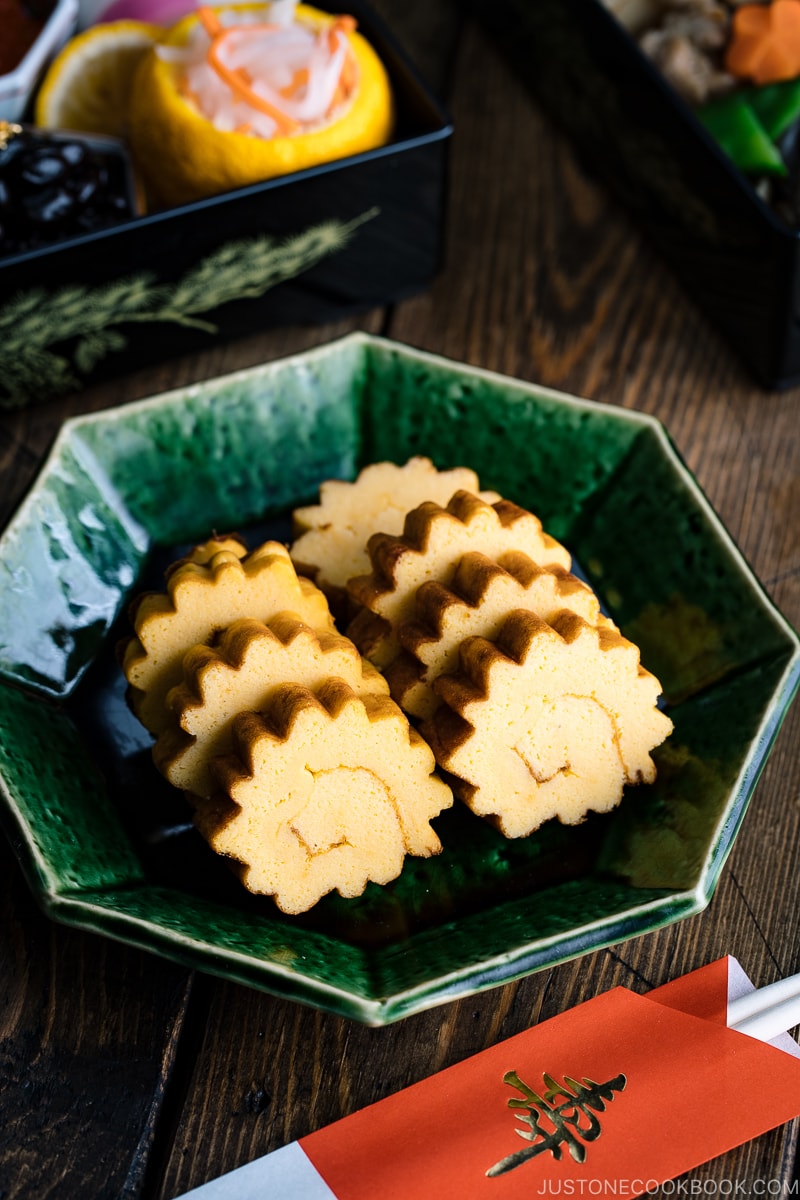
Typically served in a lacquered jubako (special square boxes similar to lunch boxes), Datemaki is a sweet rolled omelette that makes a very popular Japanese New Year’s food. It is by far my favorite dish among the new year foods. And I hope you give this delicate-looking omelette a try too!
2. Kuri Kinton (Candied Chestnut with Sweet Potatoes) Sweet chestnut paste
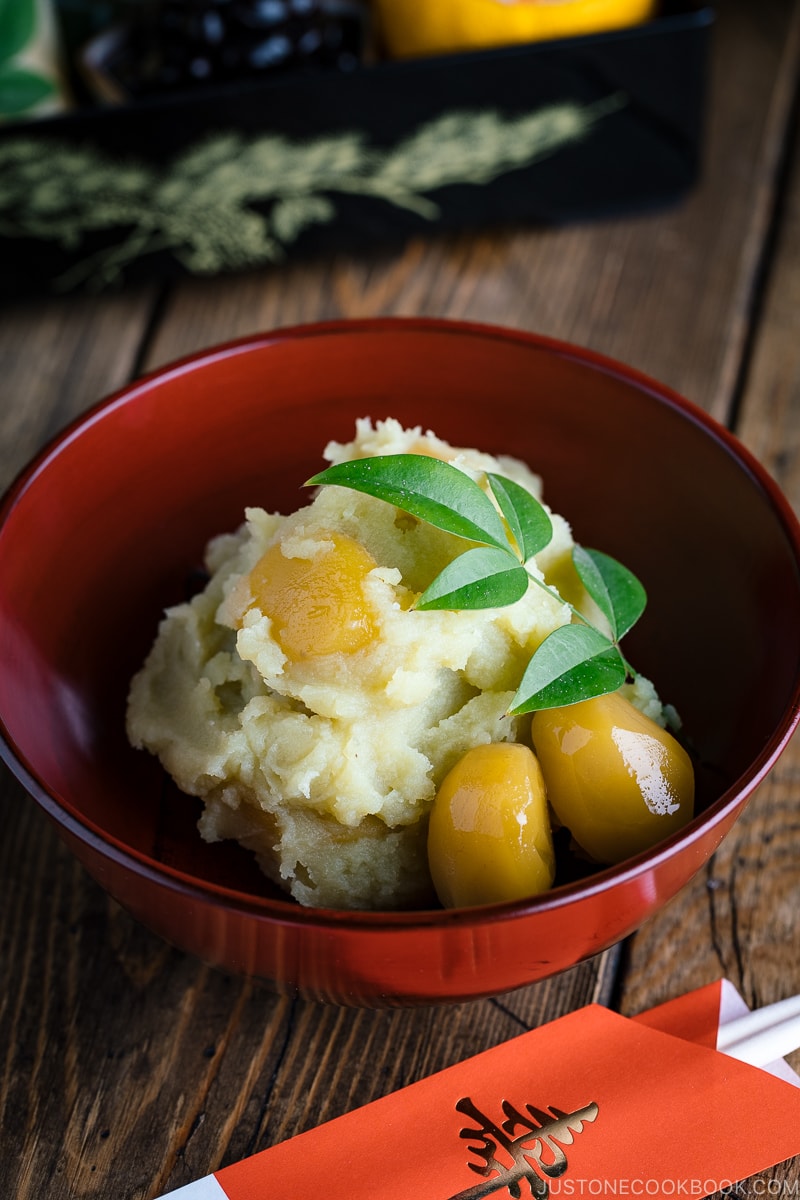
Kurikinton literary means “chestnut gold mash”, which symbolizes economic fortune and wealth. It’s important for New Year meal to bring good luck and prosperity. If you make this dish, please use Japanese Sweet Potatoes for its bright yellow color. Not only they are sweeter than regular sweet potatoes, yellow is also an auspicious color for the new year.
3. Tazukuri (Candied Sardines) rice cultivation
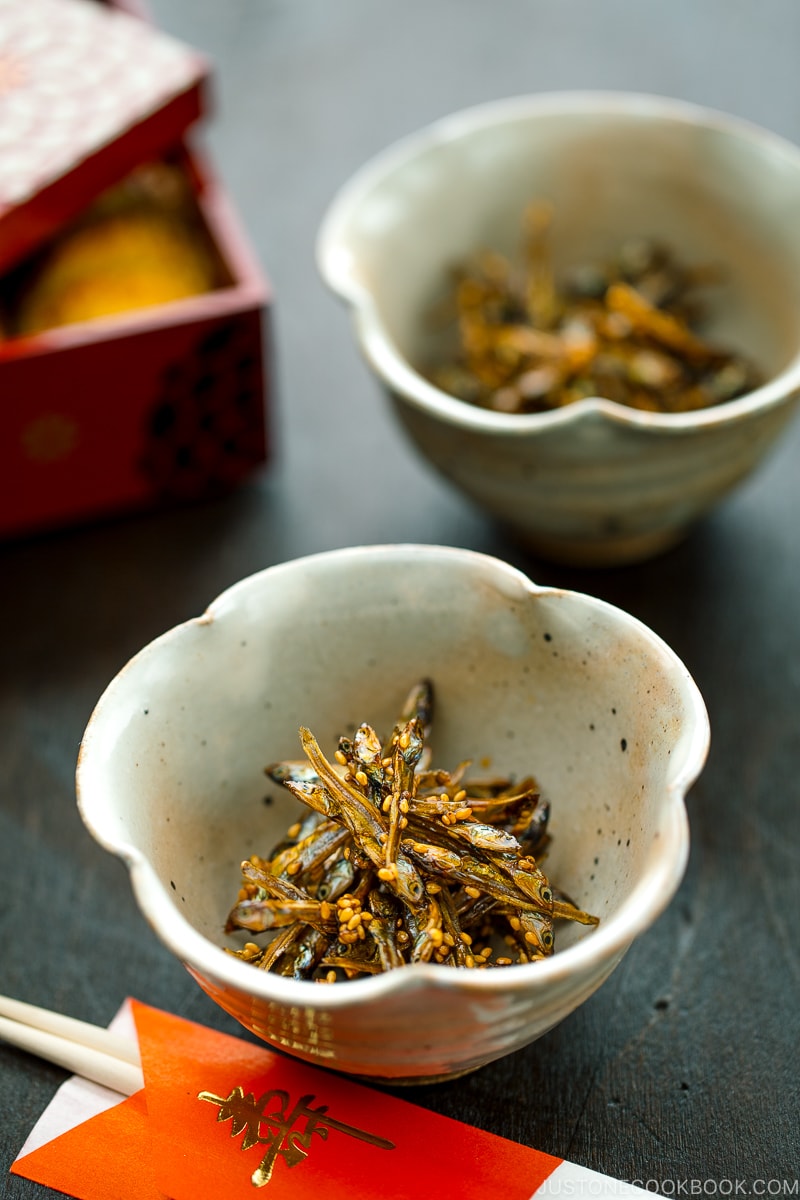
Made of roasted baby sardines & coated in a sweet soy sauce glaze, I’m sorry is another popular dish for Osechi Ryori. We eat it on New Year’s day as it symbolizes a bountiful harvest. Tazukuri (田作り) literally translates to “making (作り) rice paddy (田)” as sardines were once used as fertilizers for rice fields.
4. Kuromame (Sweet Black Soybeans) Black bean
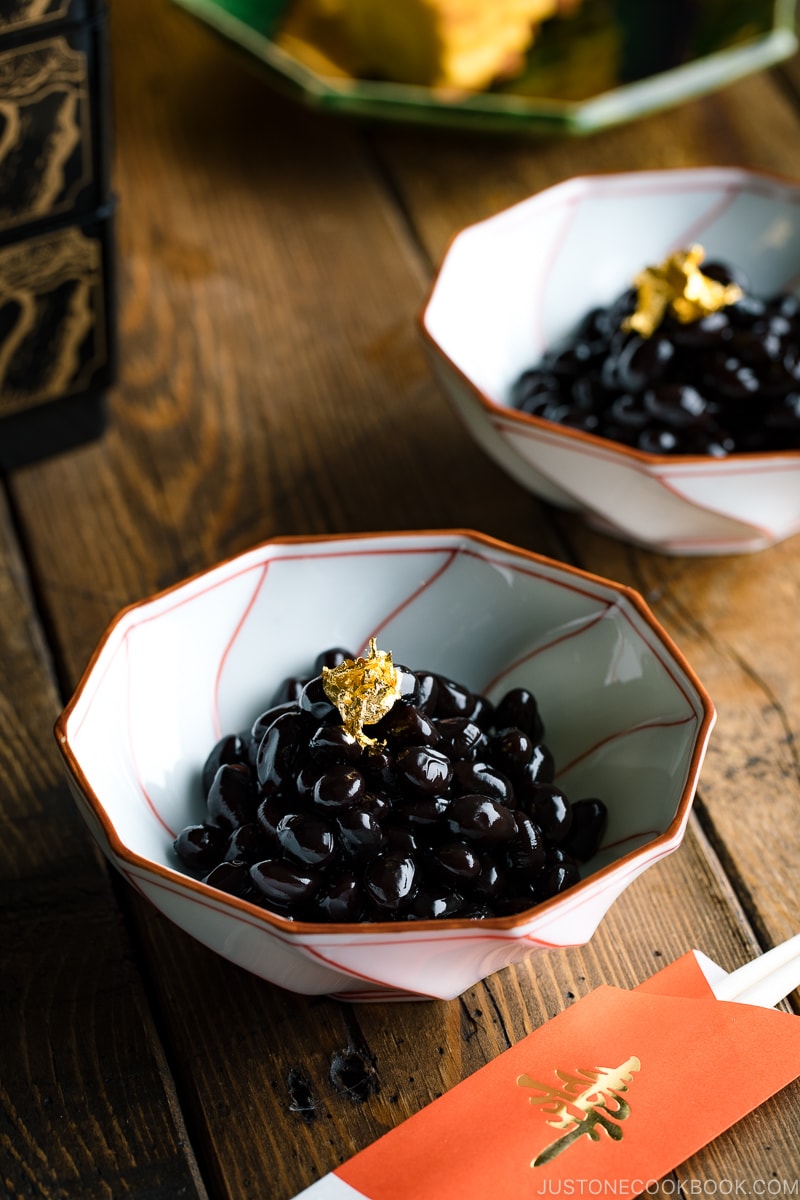
Kuromame literally means “black bean (黒豆)” in Japanese, and it is often served on New Year’s Day as a part of Osechi Ryori. The shiny black beans make a beautiful contrast to the red lacquer jubako container, which holds all different kinds of colorful traditional meals. Eating kuromame also is considered good for your health for the new year. If you want to cut down on cooking time, you can use your pressure cooker and follow this Instant Pot Kuromame recipe.
5. Kazunoko (Herring Roe) Herring roe
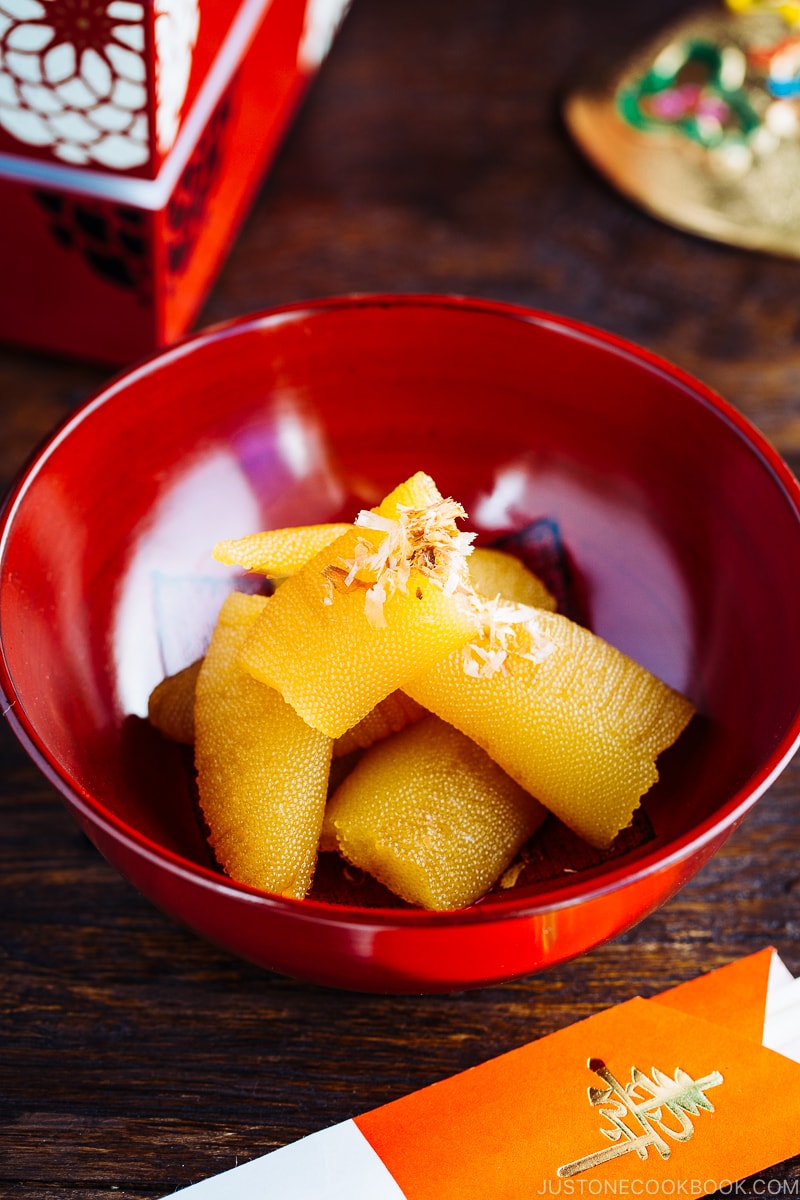
We enjoy this golden-colored Kazunoko on New Year’s day as it symbolizes a prosperous family and many offsprings. This prized delicacy has a unique crunchy texture and it’s one of the most popular dishes among Osechi Ryori.
6. Namasu (Daikon & Carrot Salad) Kohaku Namasu
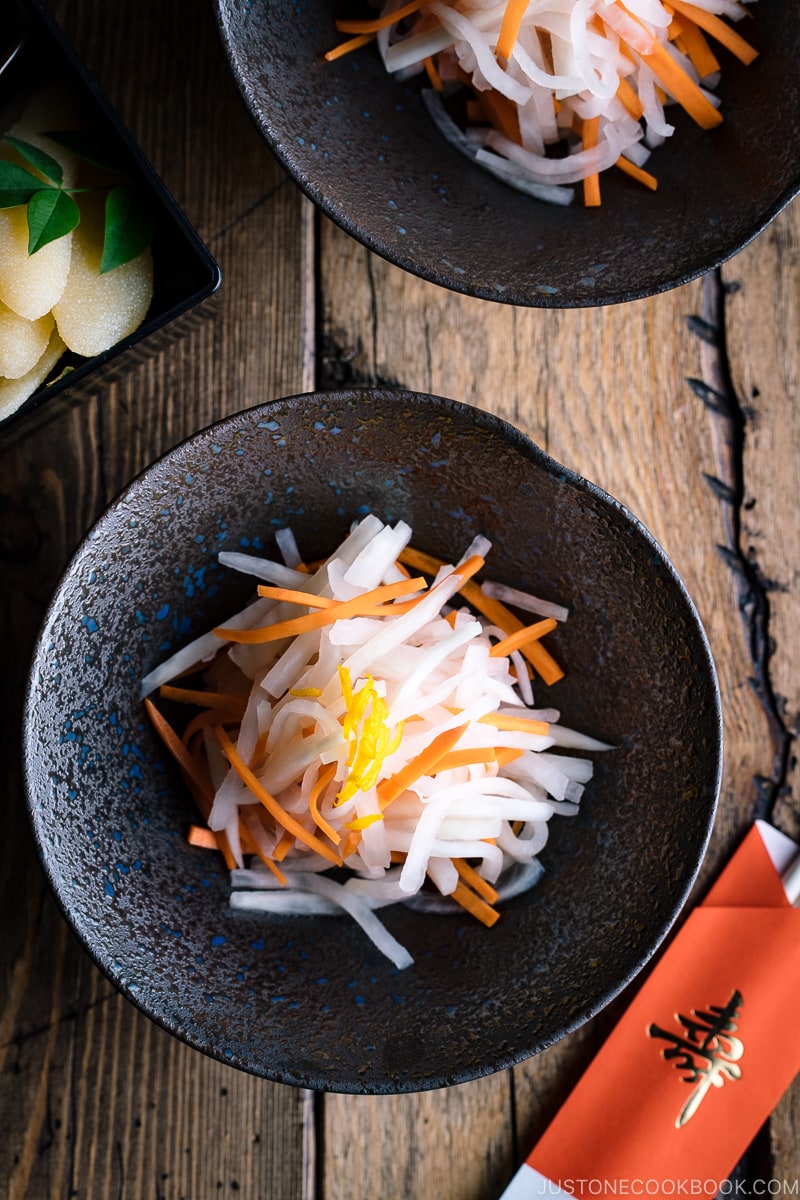
And strategies is a daikon and carrot salad that is lightly pickled in sweetened vinegar. This dish was introduced to Japan from China around the 700s (Nara period) and it is especially enjoyed during the New Year in Japan. Since red and white are considered celebratory colors in Japan, you will see these colors being used in many traditional ceremonies. This salad is easy to make and can be prepared ahead of time.
7. Pickled Chrysanthemum Turnip Chrysanthemum turnip
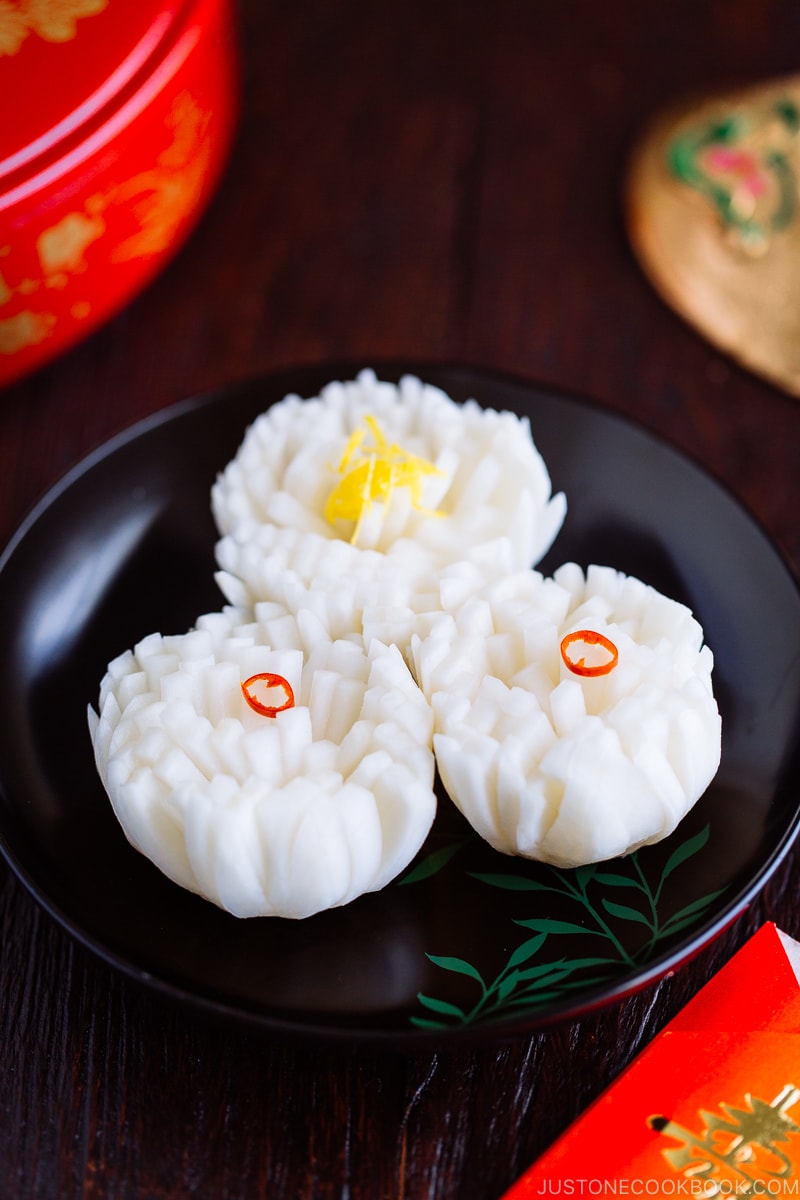
Simple decorative touches on a vegetable can transform a dish from ordinary to special. These Pickled Chrysanthemum Turnips will bring your Osechi Ryori game to the next level. And you only need some basic cutting techniques!
8. Pickled Lotus Root (Su Renkon) Vinegar lotus root
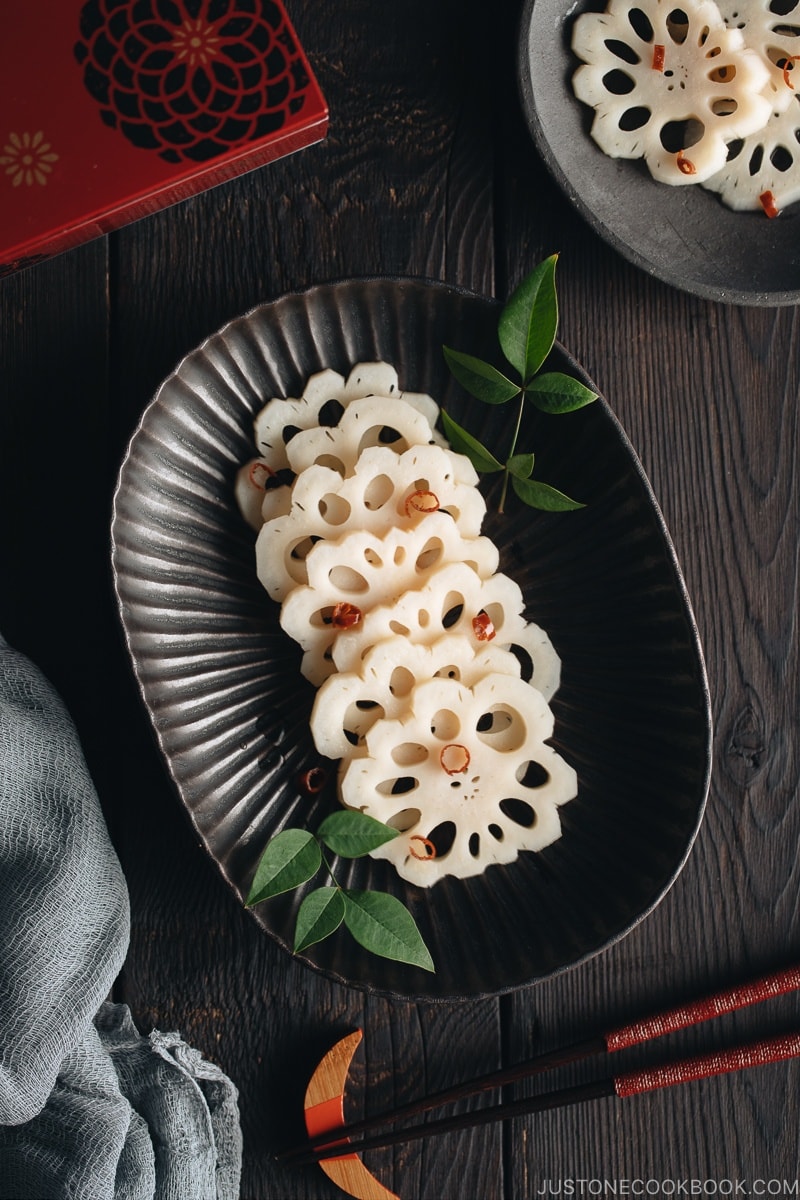
Marinated in a sweet vinegared sauce, Pickled Lotus Root is one of the popular Osechi Ryori, the Japanese New Year Food.
9. Pounded Burdock Root with Sesame Sauce (Tataki Gobo) Seared burdock
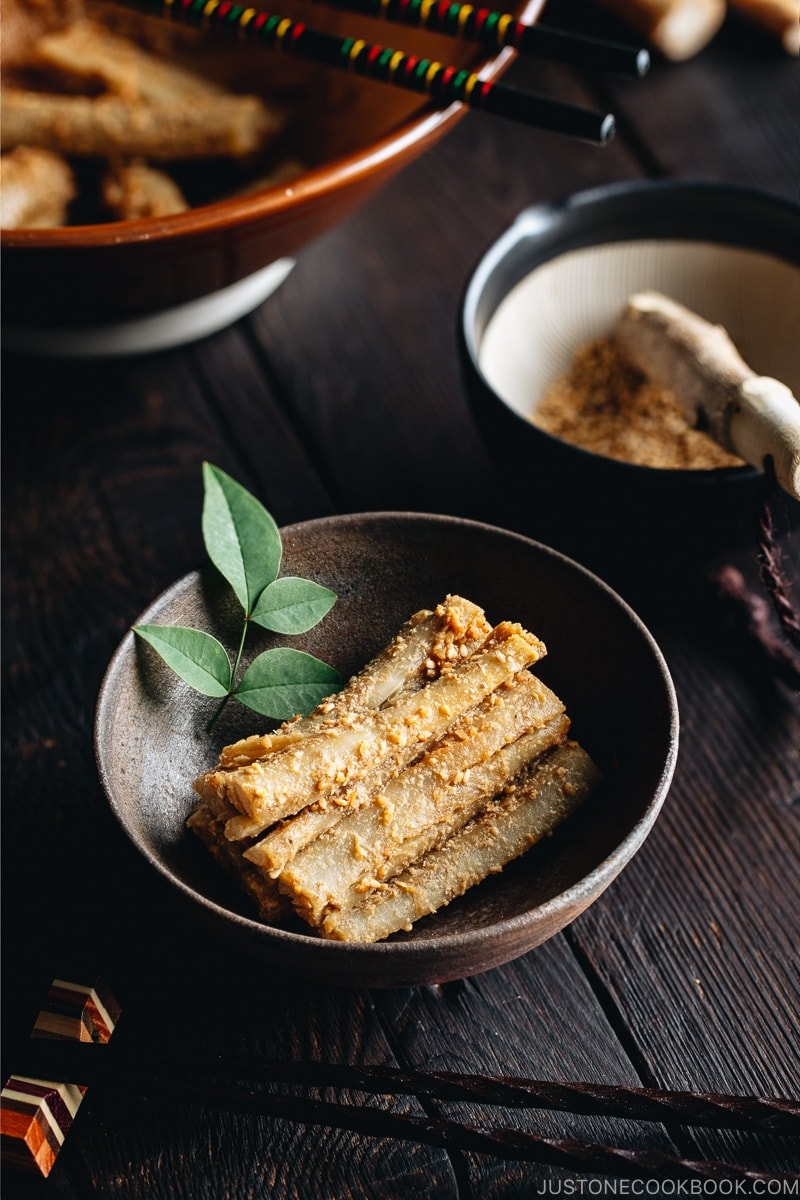
Dressed in a delicious sesame sauce, this Pounded Burdock Root (Tataki Gobo) is a popular dish that appeared in Osechi, Japanese New Year Food, which is said to bring good luck.
10. Chikuzenni (Simmered Chicken & Vegetables) Chikuzenni
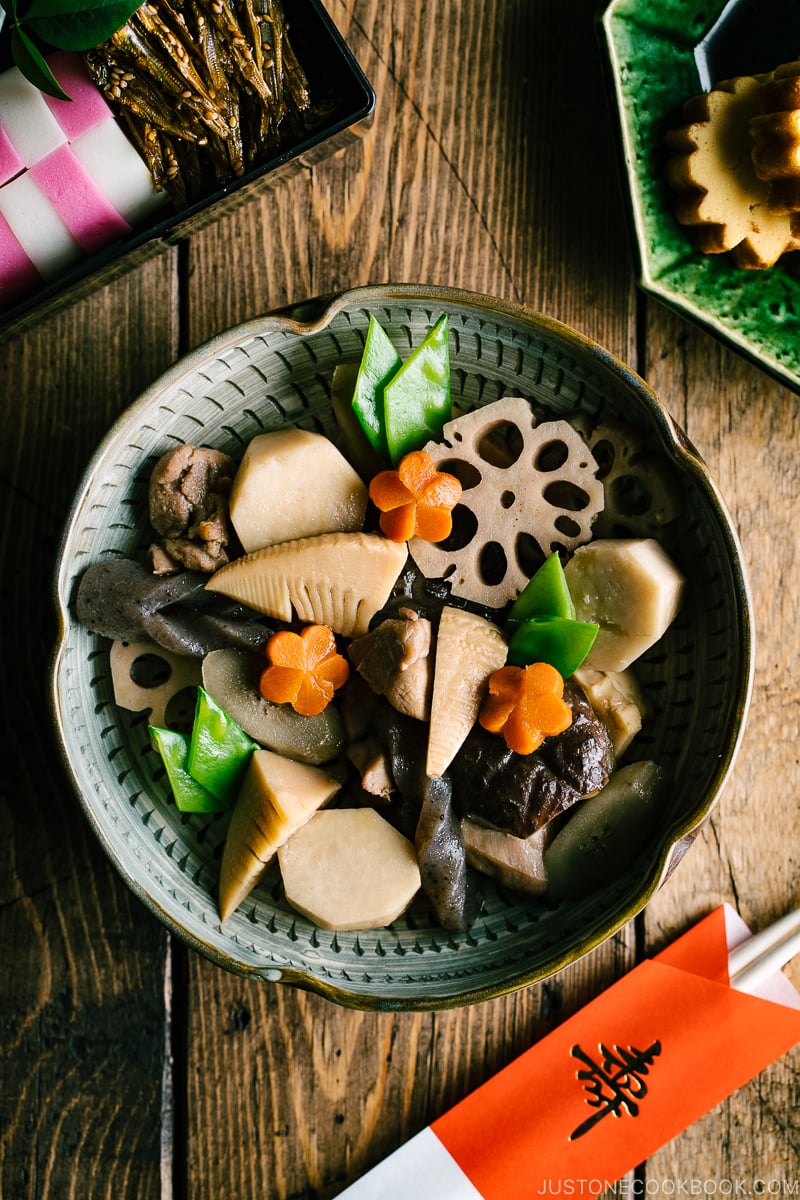
What do you do? is a classic Japanese dish often served on New Year’s Day, but my mom makes it regularly because it was my family’s favorite Killed (Japanese simmered dish). This is also a popular side dish for bento because it can be made in advance and still tastes great at room temperature. For New Year’s dish, the vegetables and konnyaku are cut into fancy shapes to celebrate the occasion.
11. Instant Pot Nishime boiled
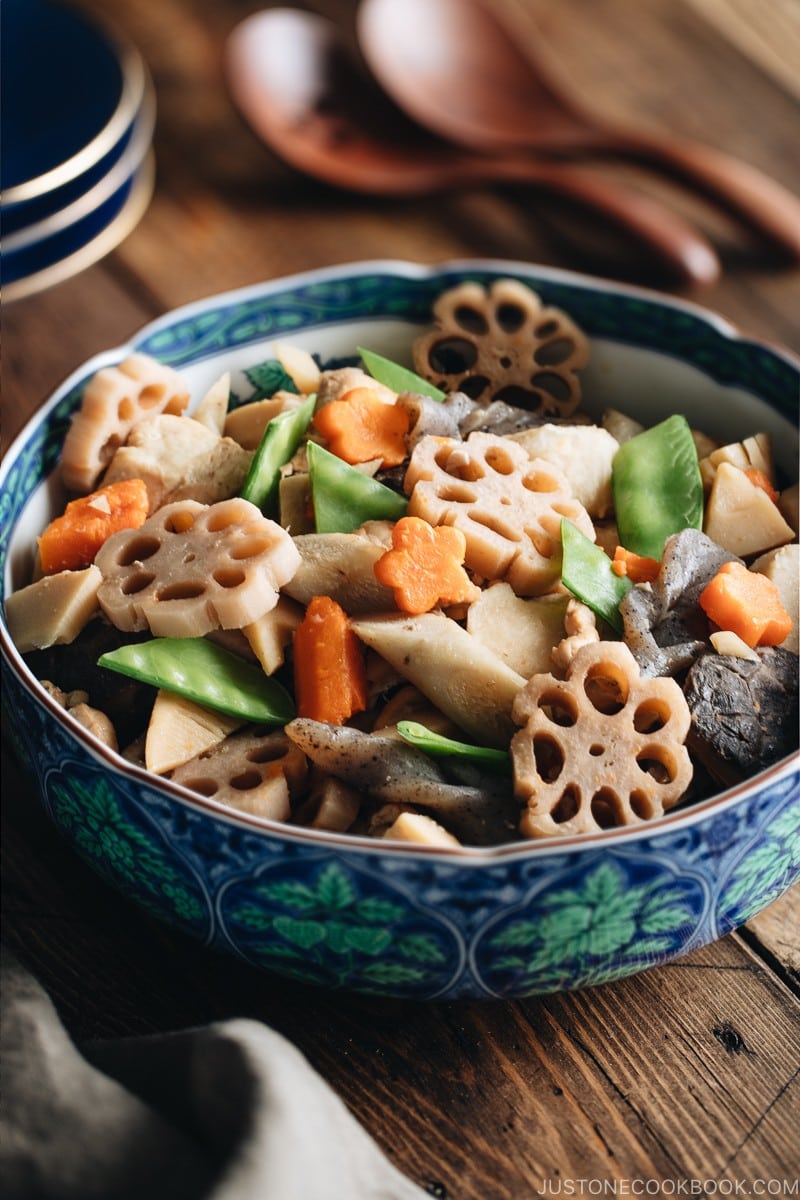
Simmered in a savory dashi-based sauce, Nishime is a classic one-pot vegetable stew to serve in Osechi Ryori for the Japanese New Year’s celebration. If you have a pressure cooker, follow my Instant Pot Nishime recipe to speed up the cooking process.
12. Simmered Shrimp (Ebi no Umani) Boiled shrimp
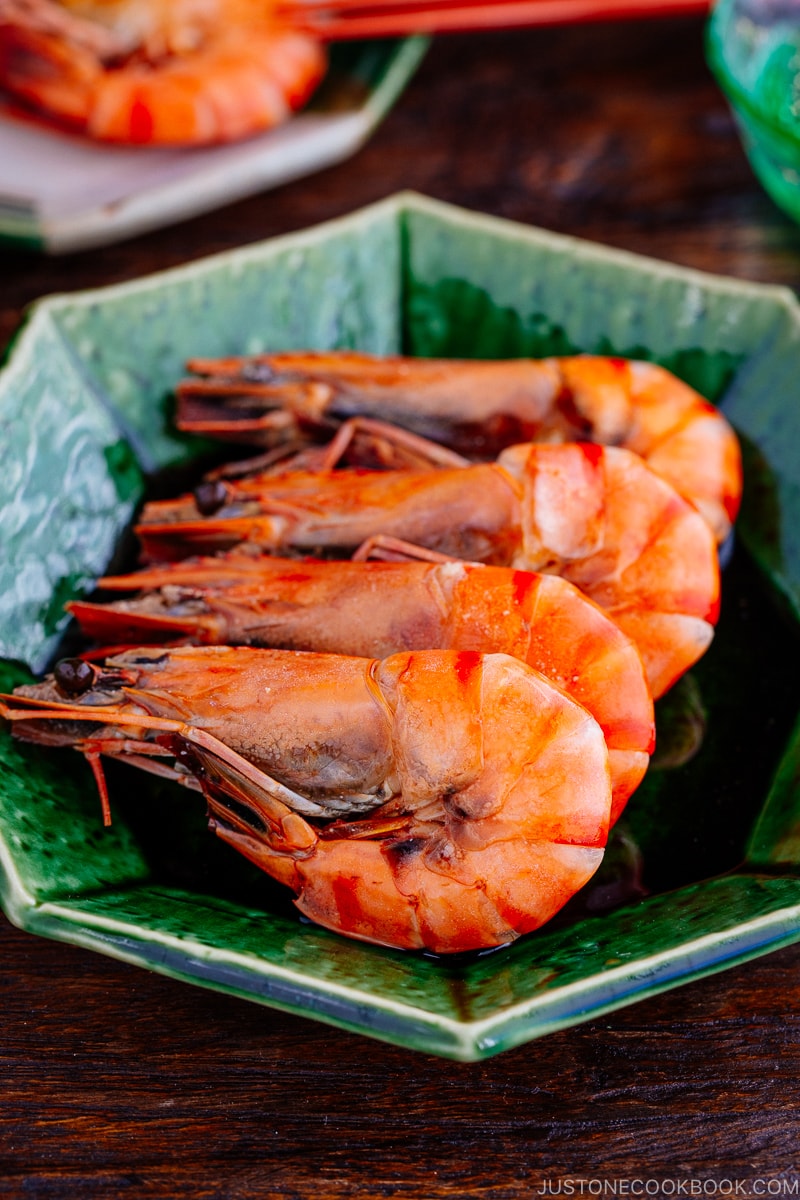
Simmered shrimp cooked in dashi soy sauce and soaked overnight, this beautiful dish adds bright color and delicious flavor to your Osechi Ryori.
13. Salmon Kombu Roll Salmon kelp roll
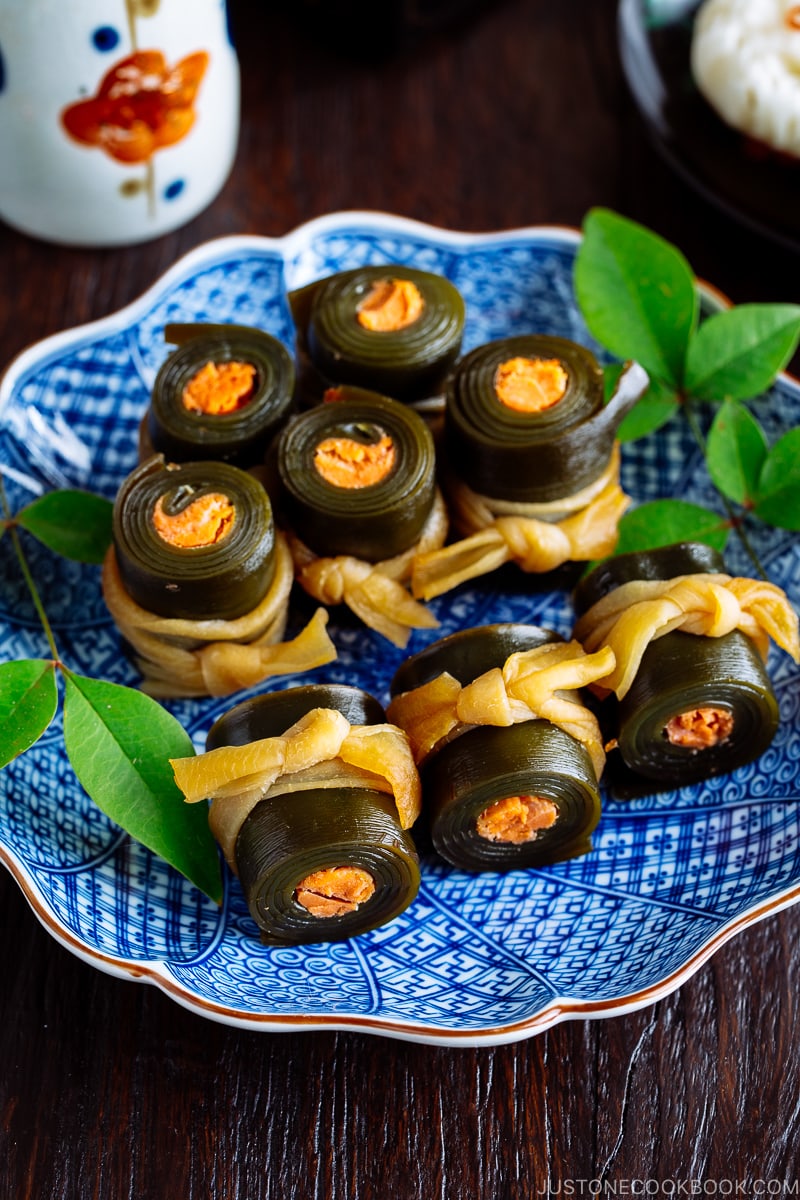
Flavorful salmon rolled up in kombu and tied with kanpyo (gourd strips), Salmon Kombu Roll is a traditional Japanese dish for the New Year. Representing the secrets of perennial youth and long life, you may be tempted to devour more than one of these exquisite appetizers.
14. Yellowtail Teriyaki Yellowtail teriyaki
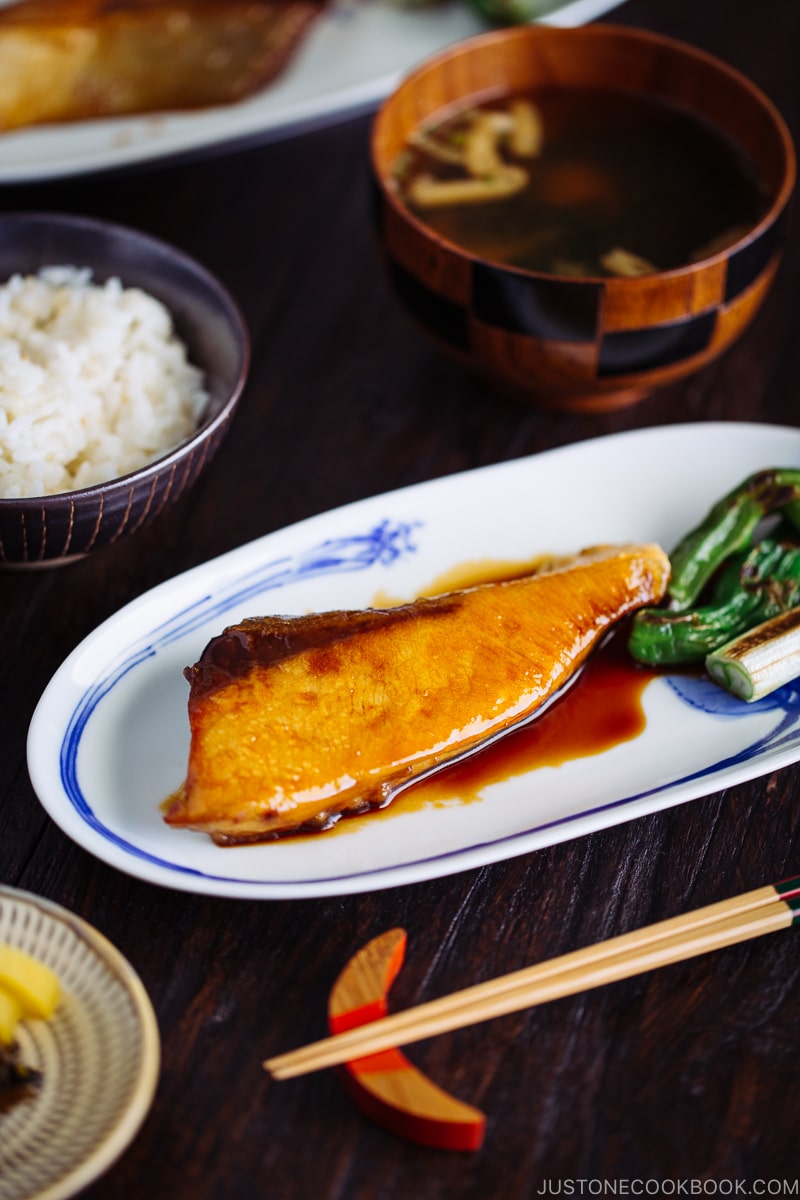
Yellowtail Teriyakior Buri no Teriyaki, is a classic fish dish in Japan. Simple and elegant with the perfect glaze of teriyaki sauce, this dish is a perfect main dish to enjoy on New Year’s Day.
15. Butter Soy Sauce Scallops Grilled scallops with butter and soy sauce
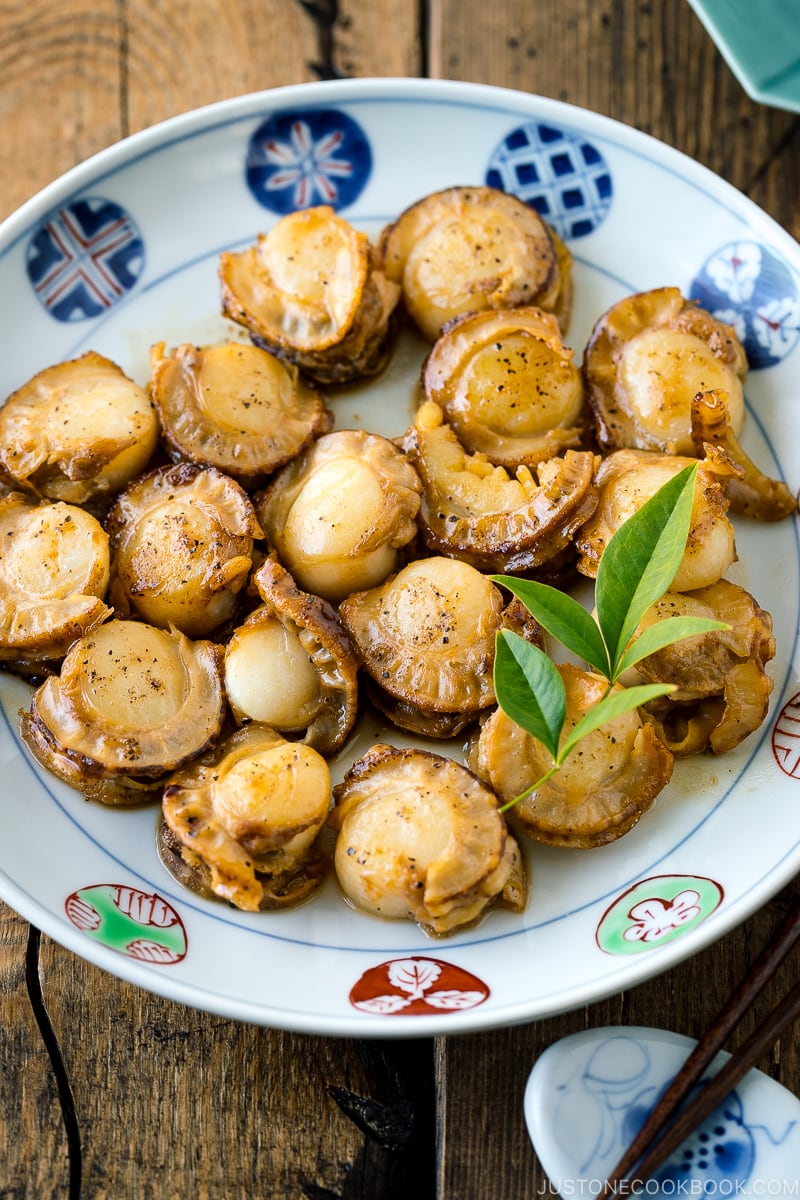
Pan-fried to perfection and seasoned with just soy sauce and butter, these Butter Soy Sauce Scallops are unbeatable in my book. Each morsel is so tender, flavorful, and so addicting! This is a crowd-pleaser appetizer you can make in no time. Perfect for any Japanese-inspired party!
16. 7 Beautiful Designs to Cut Japanese Fish Cake (Kamaboko) Decorative cut of kamaboko
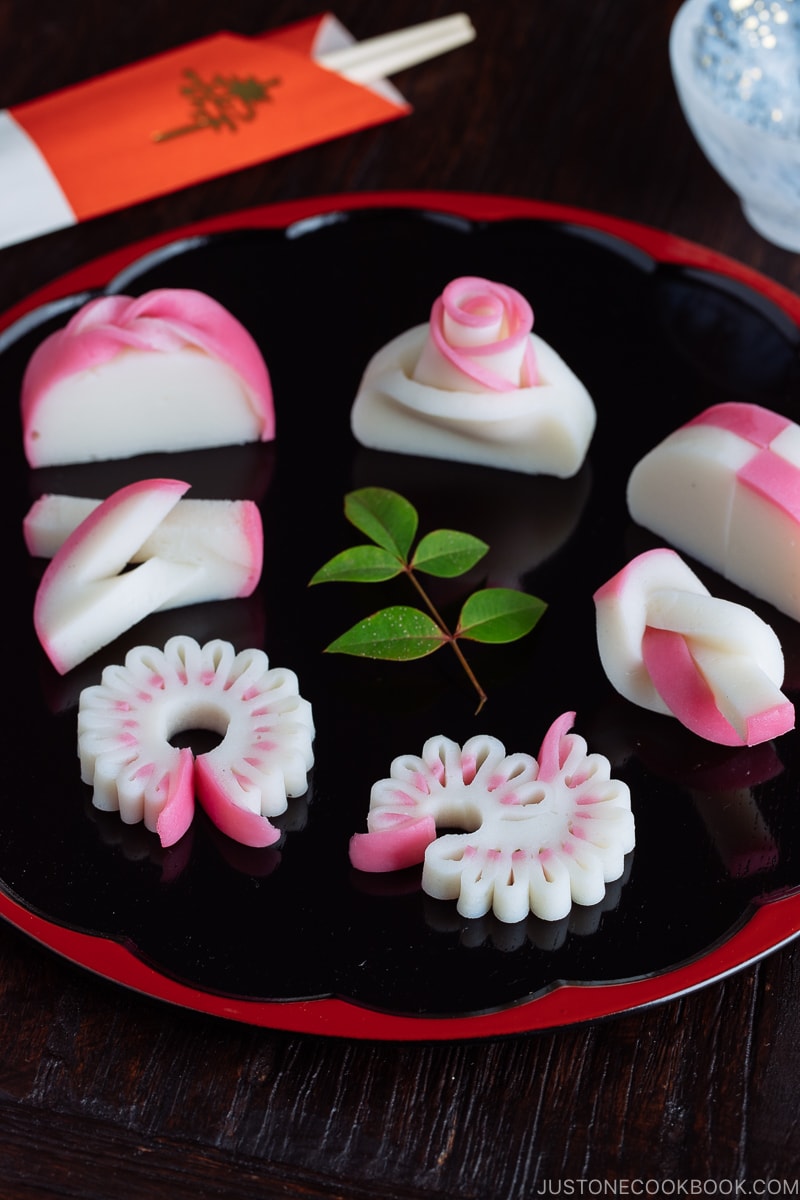
Two Japanese fish cakes (Kamaboko), seven beautiful designs to cut Japanese fish cake! Make ordinary fish cake into decorative designs on this Oshogatsu (Japanese New Year)!
17. Kamaboko Fish Cake with Salmon Roe Kamaboko salmon roe
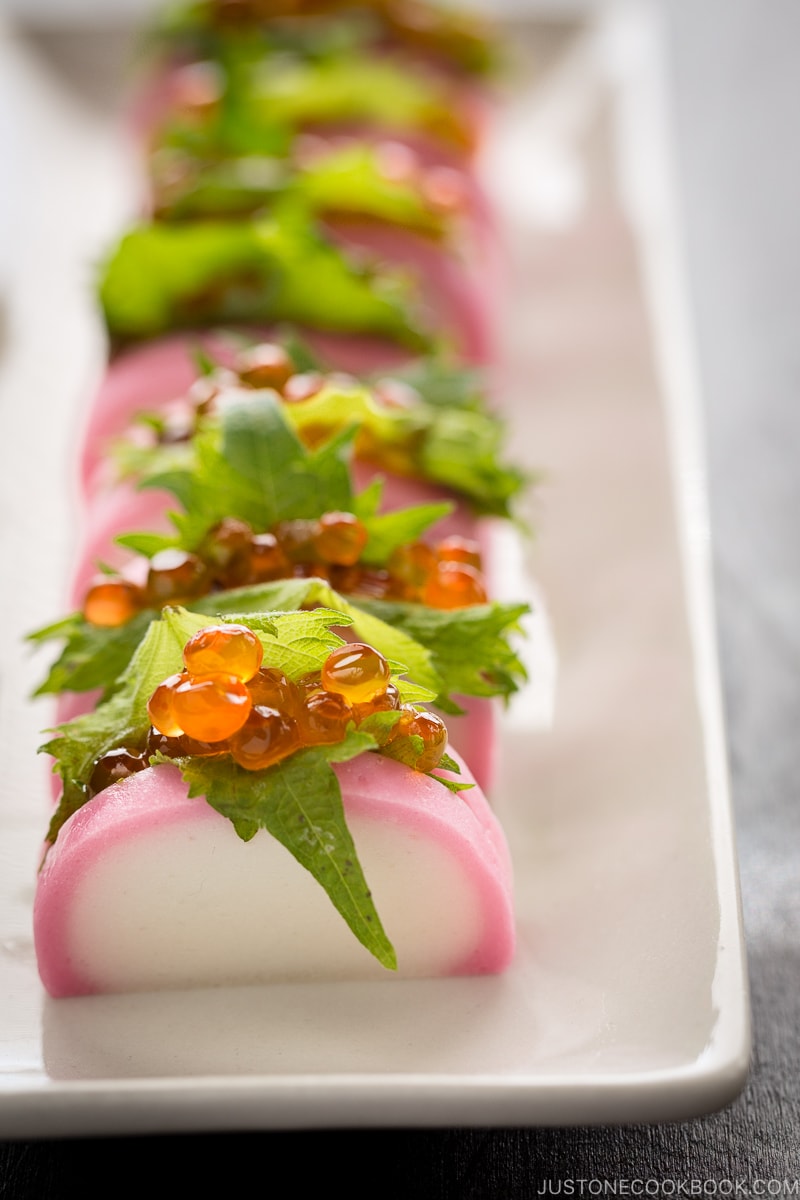
With its elegant presentation, Kamaboko Fish Cake with Salmon Roe makes an impressive addition to your Osechi Ryori. You’d be surprised how easy it is to make the recipe. Simply make small slits across the Kamaboko (fish cake), stuff in shiso leaf, and top with golden salmon roe.
18. Kanto-style Ozoni (New Year’s Soup) Kanto style zoni
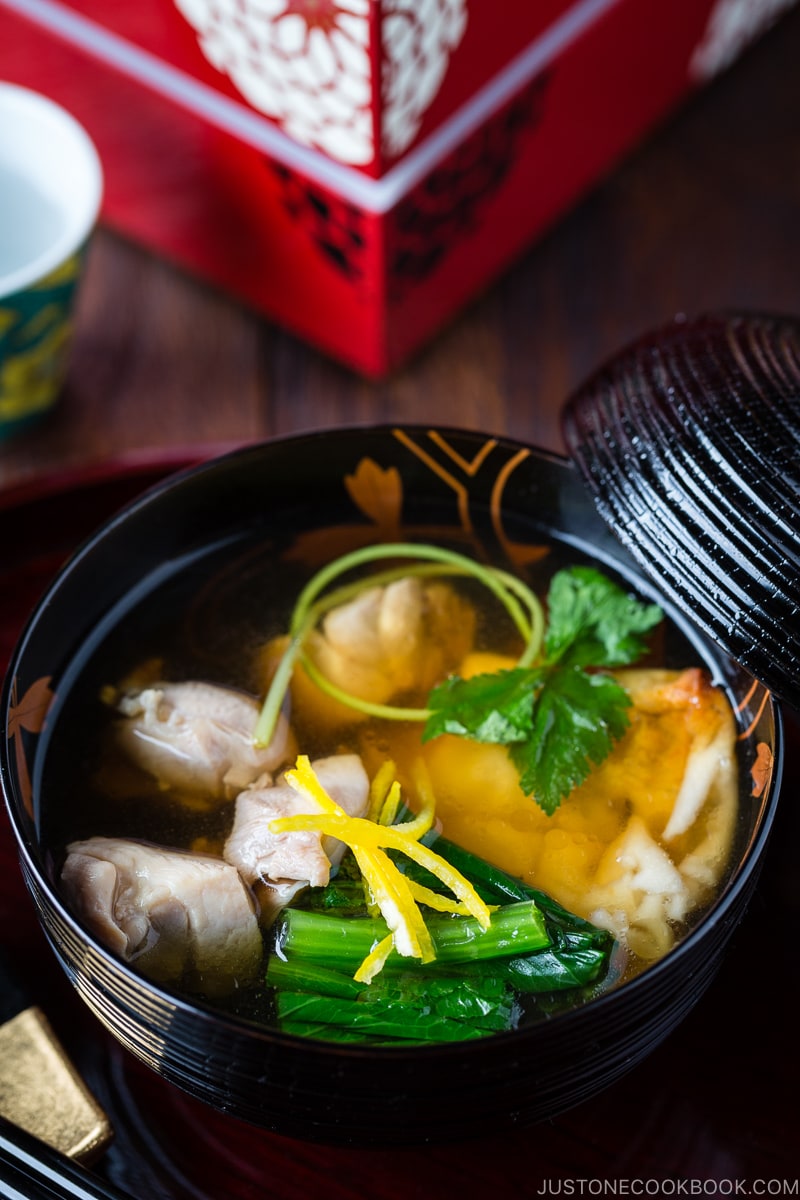
Ozoni (Japanese New Year Mochi Soup) is a clear dashi-based mochi soup with chicken and seasonal vegetables, which is enjoyed in the Kanto region (Eastern Japan). This comforting winter soup usually includes toasted mochi, chicken, and Japanese mustard spinach and is served with varieties of Osechi Ryori.
19. Kansai-style Ozoni (New Year’s Soup) Kansai style zoni
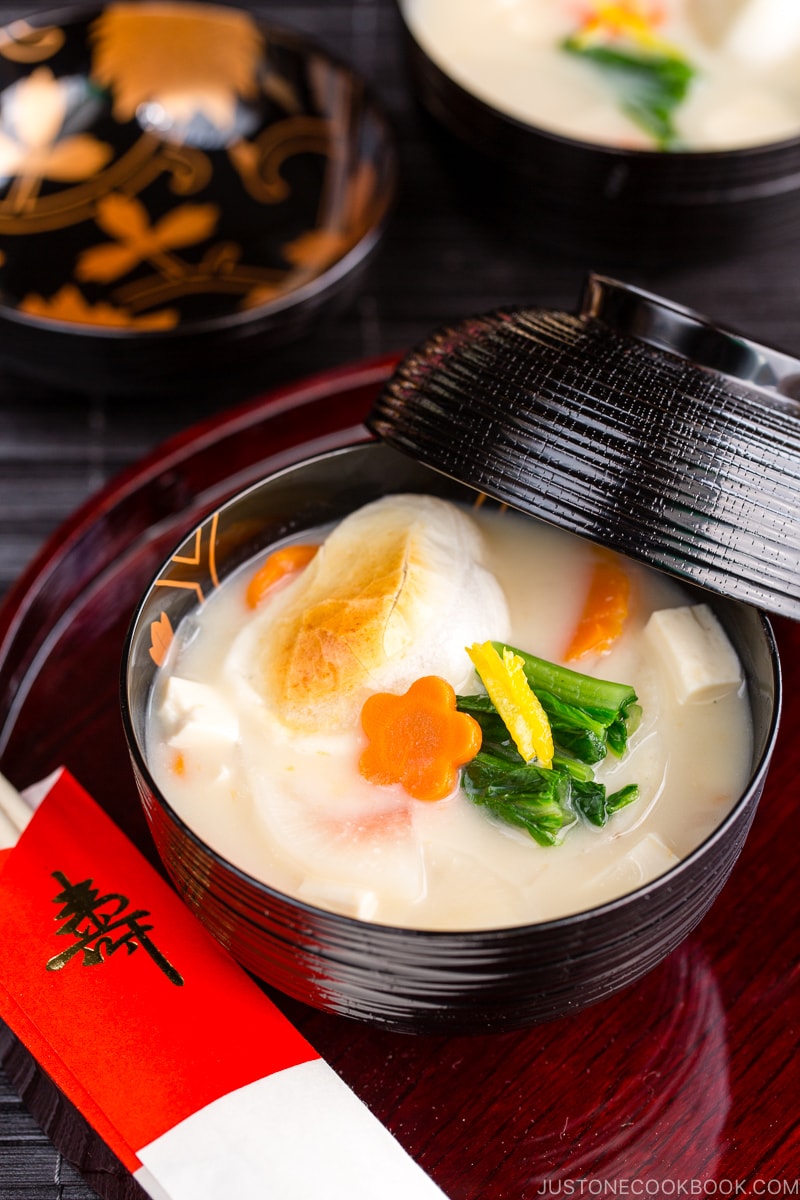
This Kansai-style Ozoni is a miso-based soup enjoyed in the morning on New Year’s Day. The soup includes mochi (rice cake), and the preparation varies by region and household. My recipe is an adaptation from my mom’s recipe where I include leafy green vegetables and yuzu peel.
20. Homemade Fresh Mochi How to make mochi with a stand mixer
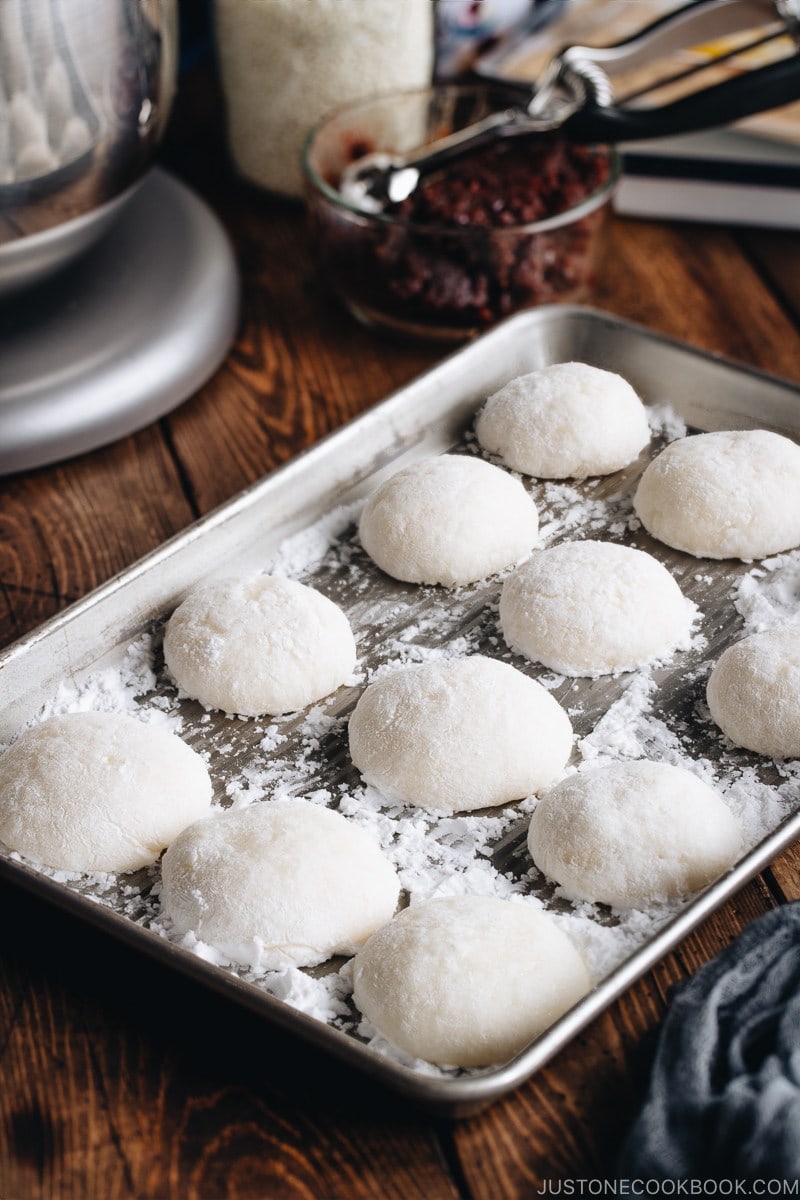
Make fresh homemade mochi using a stand mixer! Stuff the mochi with your favorite filling, dip in a savory or sweet coating, or enjoy it in Japanese New Year Soup and red bean soup.
21. Mochi (Japanese Rice Cakes) Various rice cakes
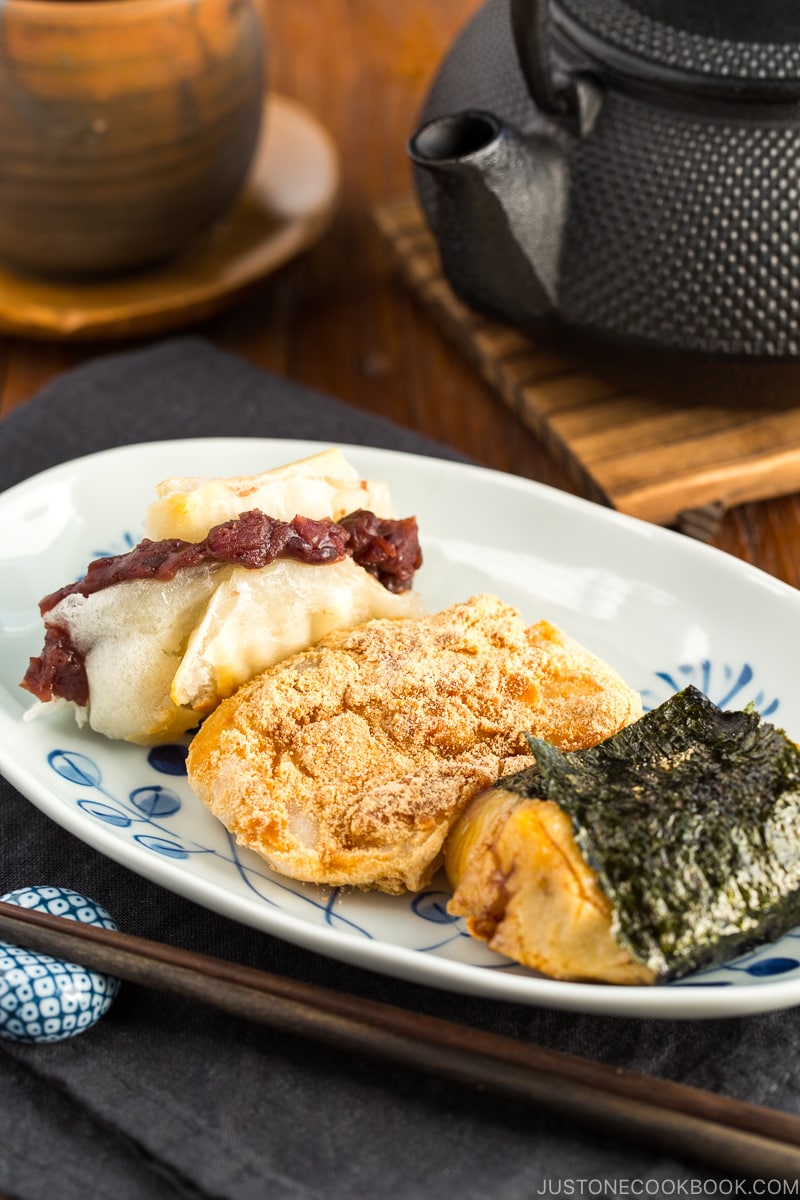
From sweet to savory, there are various types of mochi (Japanese rice cake) we enjoy in Japan. For savory dishes, mochi is used as a topping for Ozoni, hot udon noodle soup, or inside Okonomiyaki. For sweet dishes, you will find Mochi Ice Cream, Zenzai (Oshiruko), Strawberry Daifuku, and so on. So for Japanese New Year, you have the perfect excuse to enjoy them all.
22. Sweet Red Bean Paste (Anko) Bean paste
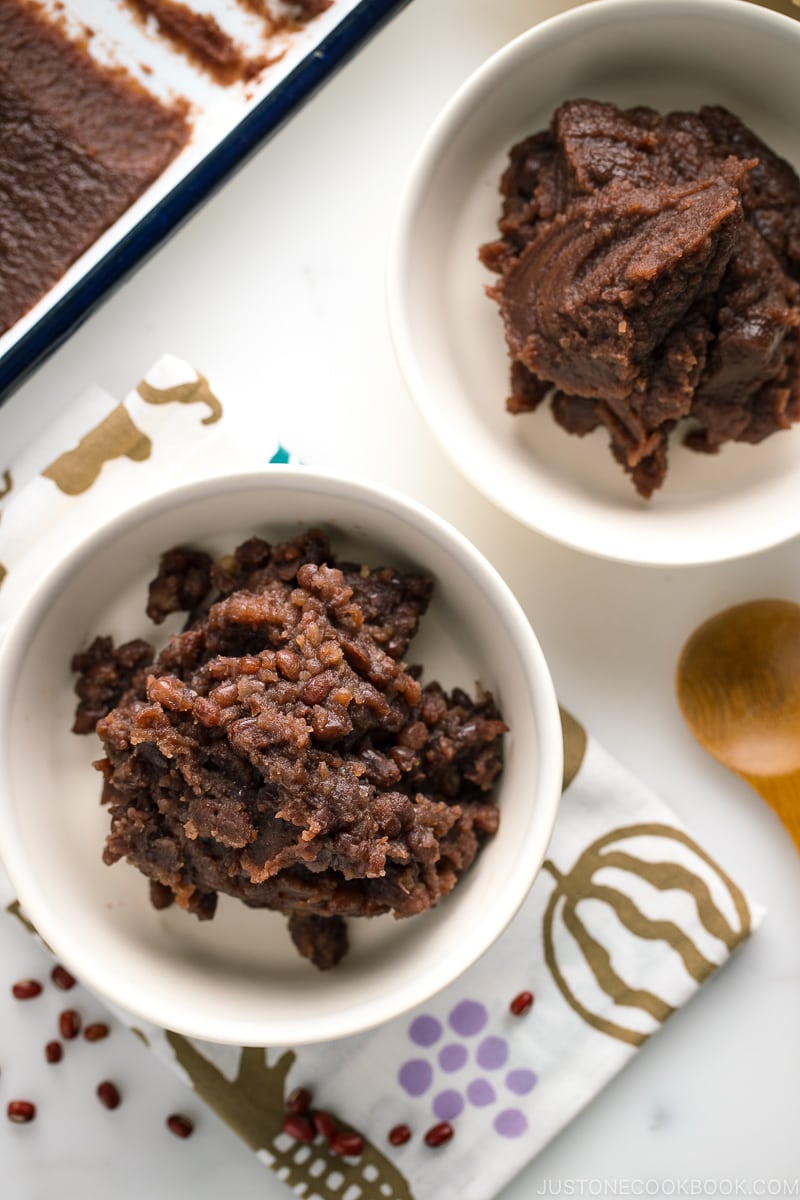
Red bean paste (or Anko in Japanese) is used as a filling in many delicious Japanese sweets and desserts. This Pressure Cooker Anko recipe is an easy way to prepare sweet bean paste without much hassle. Once it’s cooked, you are set to make all sorts of mochi or Dorayaki and Taiyaki. Don’t have a pressure cooker? Here’s the traditional stovetop method.
More Helpful Guides for Japanese New Year
Wish to learn more about Japanese cooking? Sign up for our free newsletter to receive cooking tips & recipe updates! And stay in touch with me on Facebook, Pinterest, YouTubeand Instagram.
Editor’s Note: Original post was published on Dec 27, 2015. The content has been updated on December 27, 2022.

